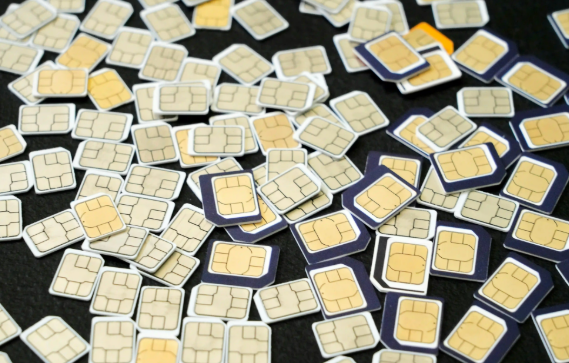Imagine you're about to log into your cryptocurrency account, only to find that your password is incorrect and your phone has lost its signal. Minutes later, your account funds are mysteriously transferred and vanish without a trace.
This is not a movie plot but a real-life nightmare experienced by countless victims.
T-Mobile, one of the world’s largest telecom operators, has repeatedly suffered security breaches, leading to SIM swap attacks and cryptocurrency theft.
Record-High Settlement: T-Mobile Ordered to Pay $33 Million
On March 20, the law firm Greenberg Glusker secured a $33 million arbitration award against T-Mobile.
This case marks the highest settlement ever for a SIM swap incident, exposing severe negligence in telecom security. Even more shocking, T-Mobile attempted to suppress arbitration details to cover up its security vulnerabilities.
The case’s lead attorney, Pierce O'Donnell, a seasoned litigator with 50 years of experience, interrogated T-Mobile’s senior witnesses and meticulously laid out the evidence chain in his opening statement. He emphasized, “This is the largest known SIM swap-related award in history and a major victory for mobile phone consumers. Paul Blechner and James Molen did an outstanding job in pretrial discovery and case preparation.”

What is SIM Swapping?
SIM swapping is an account takeover attack that exploits weaknesses in two-factor authentication (2FA), where the second factor is often an SMS or phone call.
Simply put, hackers deceive telecom customer service representatives into transferring your phone number to a SIM card they control.
Blechner explains, “When an unauthorized SIM swap occurs, your phone disconnects from the network. During this time, the carrier reroutes your calls and messages to a device controlled by cybercriminals. Given that phones are commonly used for password resets and two-factor authentication across various accounts, this allows criminals to impersonate customers. The public urgently needs to understand how easy SIM swapping is and the excuses carriers use to evade responsibility in court.”
Once successful, hackers can:
Intercept your calls and texts
Reset your bank or cryptocurrency account passwords
Steal your funds or take over your social media accounts

SIM swap attacks have been on the rise in recent years, especially targeting cryptocurrency holders. Hackers use social engineering tactics (such as forging IDs or impersonating customer service agents) to trick telecom providers into transferring phone numbers to their control.
In other words, hackers don’t need to hack your phone—they just need to trick your telecom provider!
Why Does T-Mobile Keep Failing? What’s Wrong with Telecom Providers?
In SIM swap attacks, telecom providers are the first line of defense. If they strictly verified customer identities, hackers wouldn’t be able to hijack phone numbers. So, what’s wrong with T-Mobile?
Here are some possible reasons:
Weak authentication systems. T-Mobile’s customer identity verification process is insufficient, allowing hackers to bypass security checks easily.
Customer service manipulation. Hackers exploit psychological tactics to convince support staff to willingly transfer phone numbers.
Lack of effective preventive measures. Some carriers have implemented additional security features like PIN-locking SIM cards, but T-Mobile has yet to enforce them effectively.

James Molen, who led critical pre- and post-trial briefings and interrogated T-Mobile’s key witnesses, highlighted the strength of the evidence:
“T-Mobile tried everything to avoid liability, but the facts say otherwise—T-Mobile failed to take necessary and reasonable measures to fix its flawed security system and protect its vulnerable customers. This groundbreaking ruling is a crucial step in holding telecom providers accountable.”
Although the $33 million settlement has been made public, T-Mobile has taken steps to seal the arbitrator’s findings, preventing people from accessing details about its security flaws. Molen condemned this move:
“T-Mobile is trying to cover up the truth. They evade responsibility at every turn—from blaming victims to obstructing evidence disclosure. The public has a right to know how their phone provider is putting them at risk, and we believe the courts will ensure transparency.”
Blechner further explained:
“When an unauthorized SIM swap occurs, your phone disconnects from the network. During this time, the carrier reroutes your calls and messages to a device controlled by cybercriminals. Given that phones are commonly used for password resets and two-factor authentication across various accounts, this allows criminals to impersonate customers. The public urgently needs to understand how easy SIM swapping is and the excuses carriers use to evade responsibility in court.”
Security Guide: How to Prevent SIM Swap Attacks
While telecom providers bear responsibility for SIM swap attacks, users can also take steps to enhance their security.
For example, always double-check emails from unfamiliar addresses before clicking on any links. Scammers often use phishing attacks to steal personal data and impersonate victims.

Additionally, users can improve mobile account security by:
Setting strong passwords and security questions only they know
Enabling SIM card PIN protection
Regularly monitoring account activity
Using a separate email for account security purposes
Avoiding SMS-based two-factor authentication (2FA) whenever possible
Conclusion
This case is not just about T-Mobile—it highlights a broader regulatory gap in the telecom industry regarding SIM swap attacks. While victims have won a record-breaking settlement, these attacks will continue unless telecom providers strengthen their security measures.
Carriers must do more to protect consumers!
Do you think T-Mobile should take greater responsibility for SIM swap attacks? Are you worried your phone number could be hijacked? Share your thoughts in the comments!
Disclaimer: This article is for informational purposes only and does not constitute investment advice. The views expressed in this article are solely those of the quoted individuals and do not reflect the stance of this company. Readers should conduct thorough research and risk assessment before making any investment decisions. This company is not liable for any financial losses.
















No comments yet